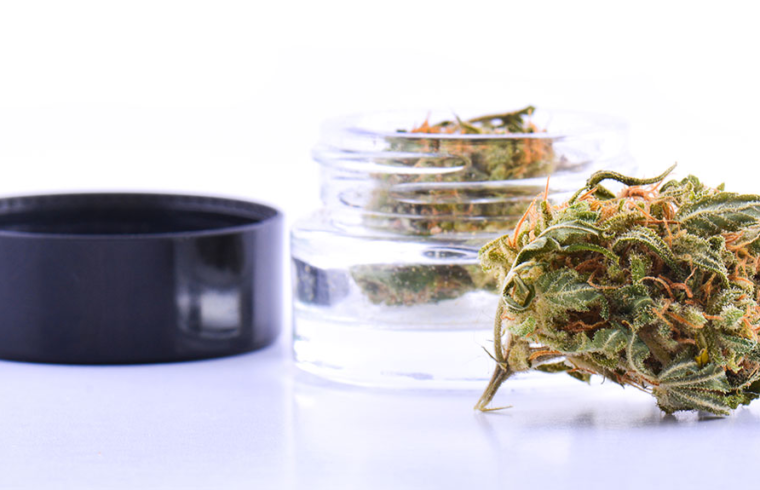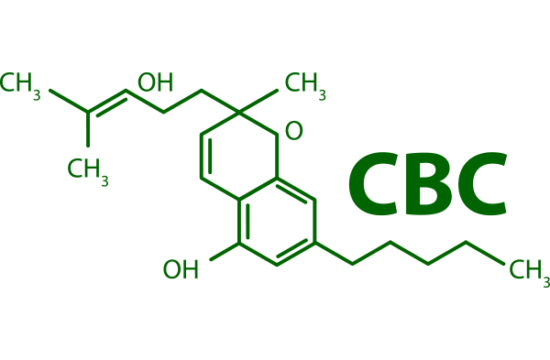Today, we’re going to delve into a fascinating topic: CBDA, also known as Cannabidiolic Acid. This compound from the *cannabis plant has garnered considerable attention in recent years, and rightfully so. We’ll dig deeper into what CBDA actually is and why it’s worth getting to know.
You may have already heard of CBD (Cannabidiol), but CBDA is a somewhat understated sibling. What sets it apart from CBD, and why might you want to learn more about it? Let’s explore this intriguing world of CBDA together and discover why it’s worth taking a moment to consider. So, take a moment to sit back and let’s unravel the mysteries of CBDA.
*In this blog, I use the terms cannabis plant and hemp plant interchangeably. I’m referring to the same plant.
Reading time: Approximately 5 minutes
Contents of this Blog
- What are cannabinoids, actually?
- What is CBDA, Cannabidiolic Acid?
- What are the potential health benefits of using CBDA oil?
- What’s the difference between CBD oil and CBDA oil?
- What sets CBD apart from CBDA?
- CBDA in Full Spectrum CBD Oil?
- Can CBDA oil get you high like THC?
- How much should you take for the effect of CBDA oil?
- What are CBDA flowers?
- What is CBDA Flower used for (applications)?
- Conclusion
What are cannabinoids, actually?
Cannabinoids are a group of active chemical compounds that naturally occur in both cannabis and hemp plants. They are known for their interaction with the endocannabinoid system in both the human body and that of other mammals. This system plays a crucial role in regulating various bodily functions, including pain, mood, the immune system, appetite, and sleep.
In total, there are more than 100 different cannabinoids identified in cannabis, with the most well-known and extensively studied being:
- Tetrahydrocannabinol (THC): This compound, present in cannabis, is known for its psychoactive effects, which lead to the “high” feeling often associated with the use of marijuana, commonly known as weed.
- Cannabidiol (CBD): CBD, the non-psychoactive cannabinoid, has gained much attention due to its potential therapeutic benefits, such as pain relief, anxiety reduction, and anti-inflammatory properties.
There are other, less-known cannabinoids, such as cannabigerol (CBG), cannabinol (CBN), cannabidivarin (CBDV), and cannabigerovarin (CBGV), to name a few. Each of these compounds has the potential to produce different effects and may contribute to the broader health benefits of cannabis.

In the above image, you can see the cannabinoids that occur in larger quantities in the hemp plant.
Cannabinoids can also be isolated and extracted from cannabis and hemp plants for use in medicines, dietary supplements, and other products. Research into these compounds and their potential applications in healthcare continues to evolve and expand.
What is CBDA, Cannabidiolic Acid?
CBDA, short for Cannabidiolic Acid, is one of the many natural compounds found in the cannabis plant, also known as the hemp plant. It’s actually the precursor to CBD (Cannabidiol), which you’ve probably heard of.
CBDA is the raw form of CBD and is actually the most common form of cannabinoids found in fresh hemp plants. It exists as an acid and is only converted into CBD when it’s heated, either through sunlight or in a process known as decarboxylation. This means that if you consume fresh cannabis, you’re actually getting CBDA instead of CBD. Many cannabinoids start as acids; for example, THC begins as THCA, and CBG originates from CBGA.
Although CBDA is less known compared to CBD, it’s slowly gaining popularity due to its potential health benefits. So, let’s take a closer look at why CBDA deserves attention and what interesting properties it holds for us.
What are the potential health benefits of using CBDA oil?
Let’s take a look at the potential health benefits of CBDA:
- Anti-Inflammatory Properties: It appears promising as an anti-inflammatory substance. This can be beneficial for individuals suffering from conditions with chronic inflammation, such as arthritis.
- Nausea and Vomiting: It has shown effectiveness in reducing nausea and vomiting, particularly important for individuals undergoing chemotherapy.
- Stress and Anxiety Zen Mode: There are some indications that it may help reduce stress and anxiety. If you’re feeling stressed or experiencing anxiety attacks, CBDA might help you find some inner peace.
- Epilepsy Management: While more research is needed, there are positive signals that CBDA may contribute to controlling epileptic seizures. This could be a promising development for people with epilepsy.
It’s important to note that research on CBDA is still in its early stages, so the effects and optimal dosage are yet to be determined. If you’re considering using CBDA oil for health purposes, it’s wise to discuss this with a medical professional, especially if you have existing medical conditions or are taking medications.
What is the difference between CBD oil and CBDA oil?
Let’s talk about CBD and CBDA, two plant-based cannabinoids found in hemp plants. CBD, short for cannabidiol, is the more well-known of the two, primarily due to extensive research into its potential therapeutic properties. On the other hand, CBDA, or cannabidiolic acid, is less known but is slowly gaining attention due to its potential health benefits.
What sets CBD apart from CBDA?
An important distinction is that CBD is more stable than CBDA. This means that CBD breaks down less readily when exposed to light or heat. CBDA, on the other hand, is the precursor to CBD, and under the influence of UV radiation and heat, it converts into CBD. This also explains why it can be challenging to find CBDA products.
Thanks to more advanced extraction methods, producers can harvest this delicate compound from fresh cannabis plants and process it into what we call RAW or Full Spectrum CBD products.
The fascinating aspect of cannabinoids is that they affect different people in different ways, depending on individual factors such as their chemical makeup and lifestyle. That’s why some individuals discover that they achieve better results with CBDA products (known as Full Spectrum oil) instead of CBD (CBD oil made from CBD isolate), depending on their personal wellness goals.

In the above image, you can see the difference between Full Spectrum CBD oil and CBD oil made from isolate (99% pure CBD crystals).
CBDA in Full Spectrum CBD Oil?
Let’s take a closer look at the relationship between CBDA and full-spectrum CBD oil. When you pick up a bottle of full-spectrum CBD oil and examine the ingredients list, you will likely notice that it contains not only CBD but also CBDA. This is not coincidental; the oil is made from natural CBD extract, not CBD isolate. In the case of CBD isolate, the oil contains only CBD.
How is Full Spectrum CBD Oil made?
Full-spectrum Raw CBD oil is produced by extracting the entire hemp plant, which means that, in addition to CBD, other cannabinoids, terpenes, and other natural compounds are included. CBDA is one of those cannabinoids naturally found in the plant.
The idea behind CBDA in full-spectrum CBD oil is that these different cannabinoids and compounds have an impact on our endo-cannabinoid system and work together in what is often called the “entourage effect.” This means they enhance each other and complement each other’s benefits, which can lead to a more potent and effective oil for certain individuals.

In the above image, you can see which compounds are necessary for the full entourage effect.
So, when you use full-spectrum CBD oil, you’re not only getting the benefits of CBD but also those of CBDA and other natural compounds from the cannabis plant. It’s important to remember that the exact ratios and the total content of CBDA may vary between different brands and products, so it may be worth exploring different options to see which best suits your needs.
Can CBDA oil get you high like THC?
Similar to CBD, CBDA does not cause intoxicating effects and will not make you high, unlike THC. CBDA (cannabidiolic acid) is a non-psychoactive compound found in fresh cannabis plants and does not have the same impact on cannabinoid receptors in the brain as THC (tetrahydrocannabinol).
How much should you take for the effect of CBDA oil?
Buying CBDA oil? Of course, you want to get the best effects from CBDA. So, what’s the ideal dosage? Well, the ideal dosage of CBDA varies depending on various factors such as individual sensitivity, desired effects, and the strength of the product. It’s recommended to start with a low dose, such as 2 drops of CBD oil twice a day, and gradually increase it as needed while closely monitoring how your body responds. You can also opt for CBD capsules. Just make sure to choose full-spectrum capsules as they also contain CBDA.
What are CBDA flowers?
A CBDA flower or bud is a variant of hemp genetically developed to contain higher concentrations of CBDA. Unlike regular hemp flowers or CBD flowers, CBDA does not undergo a drying process. This may give it a slightly fresher and “greener” scent compared to typical hemp flowers, as the drying process typically matures the terpene aroma for a more aromatic experience.

In the above image, you can see CBDA flower buds ready for use.
What is CBDA Flower used for (applications)?
CBDA and other acidic cannabinoids in raw hemp flowers undergo a transformation when exposed to heat. Therefore, the most suitable way to utilize CBDA flower is to incorporate it into recipes for raw cannabis juice or as an addition to salads. This allows you to benefit from the fibers and other micronutrients in the cannabis plant.
Conclusion
In summary, CBDA, or Cannabidiolic Acid, is an intriguing topic that is gaining more and more attention. It is the raw form of CBD, which is converted to CBD when exposed to heat. CBDA holds promising health benefits, including anti-inflammatory properties, relief from nausea, stress and anxiety reduction, and potential assistance with epilepsy. It is often found in full-spectrum CBD products, where it interacts with other cannabinoids and compounds for an enhanced effect, without psychoactive side effects like THC. The right dosage can vary depending on individual factors, and CBDA flowers can be used in raw cannabis juices or as an addition to salads for added micronutrients. While research is still in its early stages, CBDA promises to be an exciting addition to the world of cannabinoids and their potential health benefits.
Sources:
National Library of Medicine – 2020 – Cannabidiolic Acid, a Still Overlooked Bioactive Compound: An Introductory Review and Preliminary Research
ProjectCBD.org – 2020 – CBDA—The Raw Story
ProjectCBD.org – 2021 – CBD & Its Entourage
Medical Jane – Cannabinoids 101












